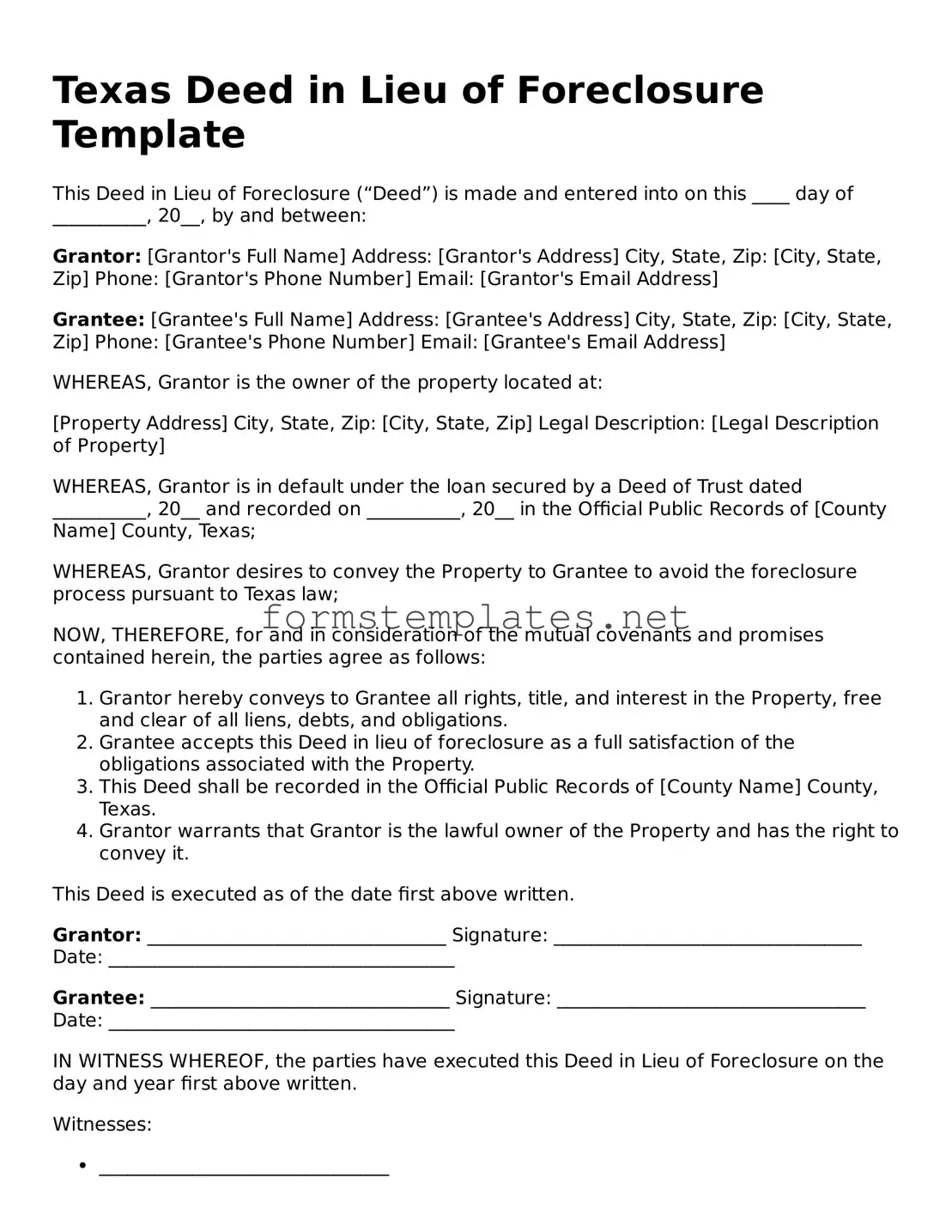Texas Deed in Lieu of Foreclosure Template
This Deed in Lieu of Foreclosure (“Deed”) is made and entered into on this ____ day of __________, 20__, by and between:
Grantor: [Grantor's Full Name]
Address: [Grantor's Address]
City, State, Zip: [City, State, Zip]
Phone: [Grantor's Phone Number]
Email: [Grantor's Email Address]
Grantee: [Grantee's Full Name]
Address: [Grantee's Address]
City, State, Zip: [City, State, Zip]
Phone: [Grantee's Phone Number]
Email: [Grantee's Email Address]
WHEREAS, Grantor is the owner of the property located at:
[Property Address]
City, State, Zip: [City, State, Zip]
Legal Description: [Legal Description of Property]
WHEREAS, Grantor is in default under the loan secured by a Deed of Trust dated __________, 20__ and recorded on __________, 20__ in the Official Public Records of [County Name] County, Texas;
WHEREAS, Grantor desires to convey the Property to Grantee to avoid the foreclosure process pursuant to Texas law;
NOW, THEREFORE, for and in consideration of the mutual covenants and promises contained herein, the parties agree as follows:
- Grantor hereby conveys to Grantee all rights, title, and interest in the Property, free and clear of all liens, debts, and obligations.
- Grantee accepts this Deed in lieu of foreclosure as a full satisfaction of the obligations associated with the Property.
- This Deed shall be recorded in the Official Public Records of [County Name] County, Texas.
- Grantor warrants that Grantor is the lawful owner of the Property and has the right to convey it.
This Deed is executed as of the date first above written.
Grantor: ________________________________
Signature: _________________________________
Date: _____________________________________
Grantee: ________________________________
Signature: _________________________________
Date: _____________________________________
IN WITNESS WHEREOF, the parties have executed this Deed in Lieu of Foreclosure on the day and year first above written.
Witnesses:
- _______________________________
- _______________________________
